
by Alphonso Pinto, S.T.D.
Dr. Alphonso Pinto is a Professor of Theology at Holy Apostles College and Seminary. He holds an S.T.D. in Dogmatic Theology from the Pontifical University of the Holy Cross, Rome, Italy.
Note from Dr. Chervin: My only regret reading Alphonso Pinto’s chapter is that you, the reader, cannot actually see him in person giving this as a lecture. To fully appreciate the chapter you would need to see his face and his demeanor: casual yet full of dignity; joyful yet profoundly solemn; availably human yet mystically intense. What attracts me most to Dr. Pinto’s teachings are the way he intermingles knowledge of theology, Scripture, music and art. Even without a person to person encounter, that synthesis you will find illuminating as you continue on to pursue this reading.


| They would come to know good by knowing the difference between good and evil through experiencing it. Thus, in Genesis 3, the expulsion from the Garden means a life without experiencing communion with God, without an exchange of ideas, the conversation changes, rather it ends---a common language is not spoken. God’s footsteps are heard in Paradise, causing fear in Adam and Eve. |

The predicament radically changed when Christ became man. The Logos and Son of the Father, the Anointed One from all eternity, spoke to man not in an angelic tongue, but rather, in man’s own language, mostly in Aramaic! Dei Verbum emphasizes that Christ’s communication with man is not simply in words, but in gestures as well. Thus his own words, actions and movements told humanity of God. In Sacred Tradition the context of these actions, especially the sacramental ones; the proper interpretation of a sense and a reference to Scripture are taught in order to portray the meaning Christ gave them.


Whereas Adam broke off the communion of life with God by sin, the Son of God restored it through love, sacrificing himself on the Cross. Christ’s communication with us is so intimate that he even offers himself to us as food and drink, “Take this all of you, this is my body [. . .].” In the union of the Body and the Blood of Christ, crucified and risen, with our own mortal flesh and blood, are we made participators of divine life. His life becomes the very source of our life of grace. Are we not tasting heaven? Are we in Paradise, or something more intimately linked to God? A Christian is called to a conversatio higher than Adam by grace, as St.Paul says, “Conversatio nostra in caelis est”—“our conversatio is in heaven.”

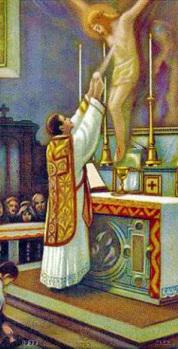
It is within this sense that the words after the consecration, Mysterium Fidei, “the mystery of faith,” can be understood. These words are not about man offering something to God. It is not about community self-reflection, rather, we are all facing the Mystery of Faith which comes to us through the Eucharist, described in signs and symbols such as sacred art, in vestments, in liturgical instruments and even the priest. At that moment, the center of time is no longer the setting of the sun, the four seasons, the stars’ positions in the sky, the calendar, but the Paschal Mystery of Christ, that is, His Passion, Death and Resurrection made present on the altar.


| After the tearing of the Temple curtain and the opening up of the heart of God in the pierced heart of the Crucified, do we still need sacred space, sacred time, mediating symbols? Yes, we do need them, precisely so that, through the “image,” through the sign, we learn to see the openness of heaven. |

Dear friends, think of the lighted candles and the prepared ornaments, does the splendor of our great solemnities stop there? Without a doubt, in its exterior radiance the liturgy is arresting, however, supernatural infused grace dwells in souls through the splendor of the rite. It is such an indescribable gift, and it is the most precious of all the manifestations of our religious culture. This grace is invisible to the eyes of man; it is a sort of interior miracle. [emphasis added]
Like the sun, even liturgical vessels point to a reality of grace beyond themselves. By their decoration they are basically catechetical in teaching us about the beauty that God is bringing about in the souls of the faithful during the Liturgy. It is a formation in a life of grace through the means of beauty.
And in the Spirit he carried me away to a great, high mountain, and showed me the holy city Jerusalem coming down out of heaven from God, its radiance like a most rare jewel, like a jasper, clear as crystal [. . .] and I saw no temple in the city, for its temple is the Lord God the Almighty and the Lamb. And the city has no need of sun or moon to shine upon it, for the glory of God is its light, and its lamp is the Lamb.[Rev 20:10-12, 22-23]
Earthly beauty is a language of the heavenly one, without it, we would not understand the Truth behind the symbolism. Words such as “jasper,” “crystal,” “glory,” have established images on earth, but their beauty portrays an imperfect but yet, metaphorically descriptive image of God’s attributes and that of the New Jerusalem.

Thus sometimes when, because of my delight in the beauty of the house of God, the multicolor loveliness of the gems has called me away from external cares, and worthy meditation, transporting me from material to immaterial things, has persuaded me to examine the diversity of holy virtues, then I seem to see myself existing on some level, as it were, beyond our earthly one, neither completely in the slime of earth nor completely in the purity of heaven. By the gift of God I can be transported in an anagogical manner from this inferior level to that superior one.

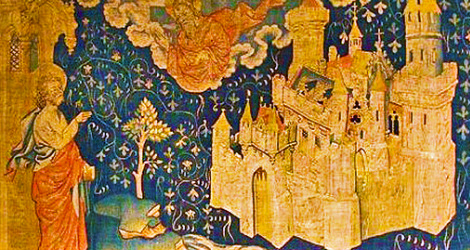

Michelangelo’s Last Judgment in the Sistine chapel is sacred. The walls are filled with saints and their emblems, the just ones are easily distinguishable from the damned; hell is a small corner compared to heaven above, whose radiance finds its source in Christ portrayed in the beauty of Apollo; angels are lifting the resurrected dead from their graves even by the beads of a rosary. All these myriad aspects form one unified whole that professes a stanza in the Creed saying: “He shall come to judge the living and the dead, and his kingdom shall have no end.” Colours are varied and not monochrome, emotions of mercy, heavenly ecstasy, despair of condemnation are portrayed in Michelangelo’s skillful design of the contours of faces. If we have lost the sense of the sacred, then the conversation with God will begin to be unintelligible. There will not be a plethora of words, forms, colours, contours informed by our literary vocabulary as expressing the transcendence of God. It is precisely this transcendence that has nurtured a plethora of artistic expressions to describe it.
Therefore we searched around everywhere by ourselves and by our agents for an abundance of precious pearls and gems, preparing as precious a supply of gold and gems for so important an embellishment as we could find, and convoked the most experienced artists from diverse parts. They would with diligent and patient labor glorify the venerable cross on its reverse side by the admirable beauty of those gems; and on its front—that is to say in the sight of the sacrificing priest—they would show the adorable image of our Lord the Saviour, suffering, as it were, even now in remembrance of His Passion.
The exuberance of created things, finite but beautiful, is supposed to portray in its refraction of varied light the radiance of divine glory which no man has seen. If one sees the Crucifixion, was present at the historical event, one would see the Son of God, willfully bowing his head in death, accomplishing the mission which He was given. Yet, there is more to be understood about the mystery than merely the physical observations of the execution. Abbot Suger describes the glory of Christ as Saviour hidden by the darkness of Calvary through the beauty of gems. Abbot Suger does not state how much the cross cost, he does not show us a receipt, but the preciousness of gems is not measured by price, but how it can be used metaphorically to portray the glory of the Cross. Human ingenuity portrays in a proper manner what in reality is uncircumsribable by the self-giving generousity of divine love.

“Church on Sunday” affirms the sacred, affirms God, and it doesn’t affirm the primacy of our daily cares, worries, and secularity; we must make sure we recognize who the “Sun” is, and what or whom does He illuminate. A blessing before meals affirms God’s benefices. A day is separated solely for Him, and yet we do not relate to him as to any other human, because we have to relate to Him as God. In Christ it is God who related to us as man, so that we can come to understand and to love, Father, Son and Spirit through the message of his Incarnation.

Rejoicing that is skimping and sparing is no rejoicing at all. Yet again, splendor and magnificence of not necessarily mean extravagant expenses, though such are not excluded. In no wise, or course, should that kind of extravagance be construed as an ostentatious display of wealth and riches. We mean the spontaneous expression of an inner richness, indeed, of that richness flowing from experiencing the true presence of God among his people.
In comparison to the in-finitude of Divine Beauty, created beauty is but a very poor imitation of the actual and ineffable divine reality that it is supposed to portray. God’s beauty is not part of this world, though created beauty does bear its vestige. It bears the trace of Divine Beauty as a pot bears the imprint of the fingers of the potter. Where does this beauty lead but love. In its declaration on the veneration of sacred relics and images, the Council of Trent expressed that sacred images, are not ends in and of themselves. They are means through which one can love God through devotion, and so, sacred images, liturgical vessels, the decoration of churches have to be based upon the Truth as revealed to us by Christ, which has Truth at it very source.
There can be no true devotion without love.
The Beauty of our symbols attracts us to the Truths that they portray. They are encounters with Christ! They entice us to discover why it is that they are mysteries. Why does the stained glass of Chartres remind me of heaven? What is it of heaven represented in the stained glass? Upon what earth do my feet tread? Am I in Paradise?
It is at this point, in the midst of Chartres, do we have to retrace out footsteps back to Adam, Eve, the snake and the garden. In the fallen state, I cannot see. Was I meant to be separated from the love of God? Can I find fulfillment in God? What is it like to converse with him? What are we doing then, in terms of communicating with God and why is God communicating to us.

But when Christ appeared as a high priest of the good things that have come, then through the greater and more perfect tent (not made with hands, that is, not of this creation) he entered once for all into the Holy Place taking not the blood of goats and calves, but his own blood, thus securing an eternal redemption. [Hebrews 9:11-12]

And between the throne and the four living creatures and among the elders, I saw a Lamb standing, as though it had been slain, with seven horns and with seven eyes, which are the seven spirits of god sent out into all the earth; and he went and took the scroll and the right hand of him who was seated on the throne. And when he had taken the scroll, the four living creatures and the twenty-four elders fell down before the Lamb, each holding a harp, ad with golden bowls full of incense, which are the prayers of the saints; and they sang a new song, saying, “worthy art thou . . .” [Rev 5:6-9]


Examine Michelangelo’s Last Judgment, how is it related to my experience of Mass in the parish? Look at its colours, look at Christ. Why is the Last Judgment on the Eastern Wall? Compare the saints to Christ; how is Christ’s beauty reflected in their beauty? Look at Christ’s complexion, his face, his radiance. Do a bit of research to figure out the pigments from which it was made, the techniques, and read about the importance of portraying the Last Judgment in Church. Is there any reason why we do not see the Last Judgment portrayed in churches today, what could be the change in attitude. How does this work of art help me relate to the Second Coming of Christ?

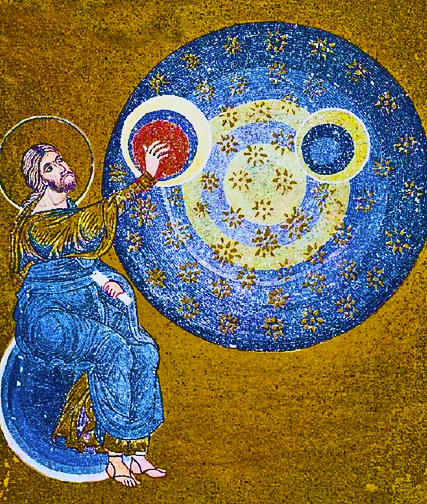

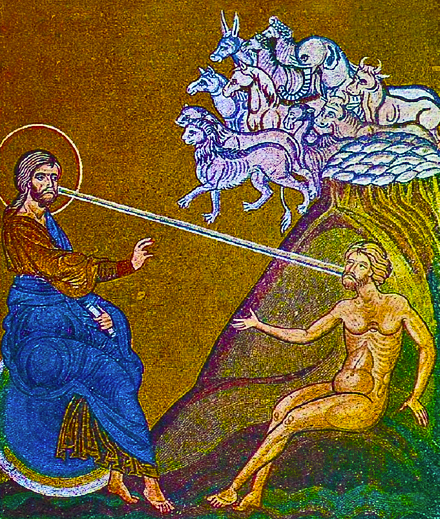
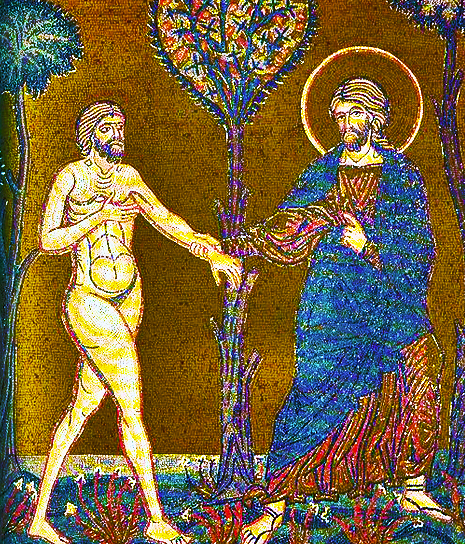
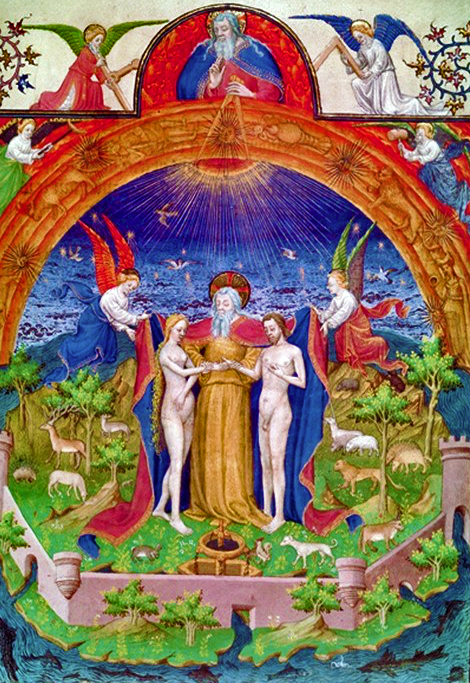
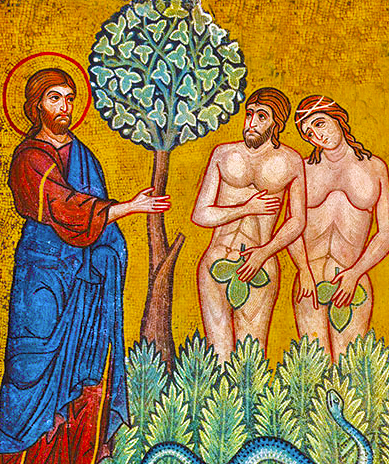



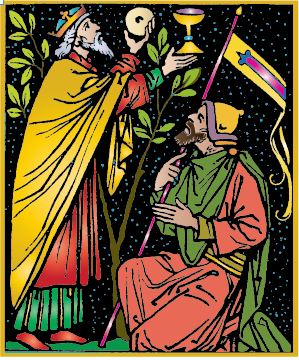
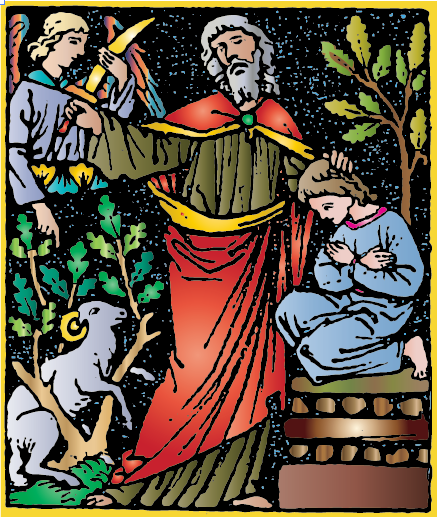

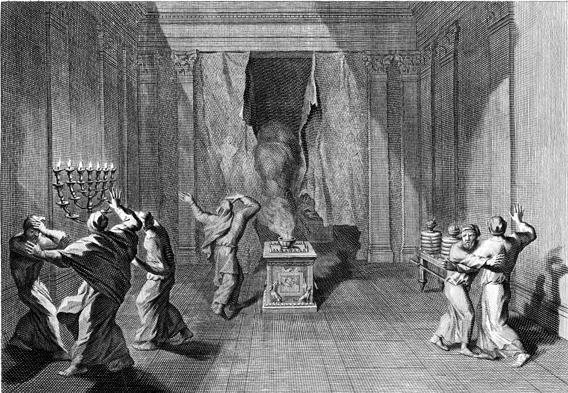
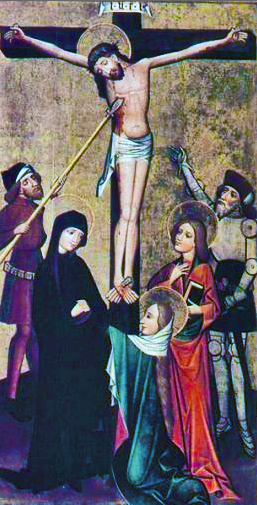
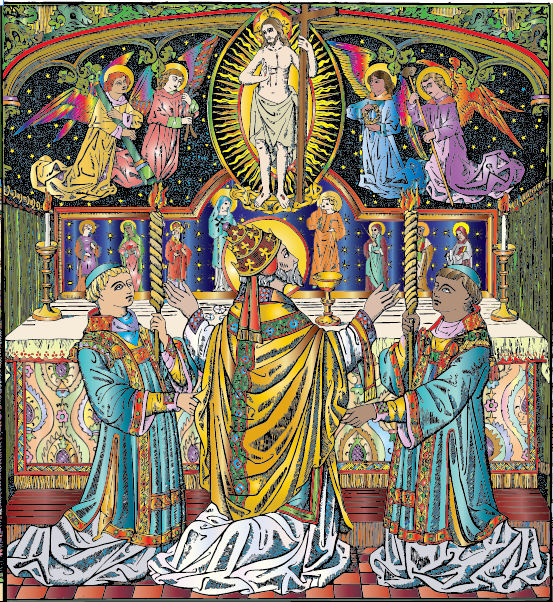

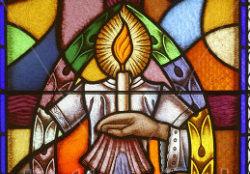
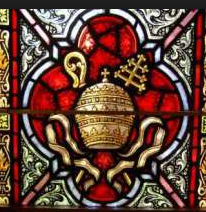

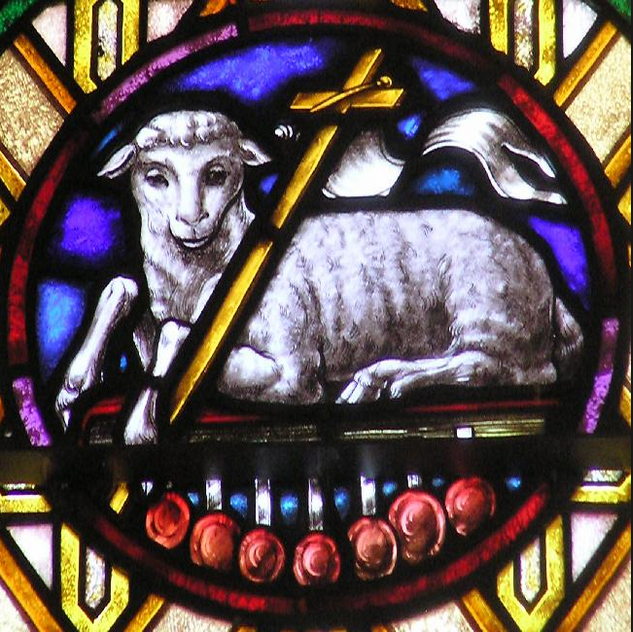
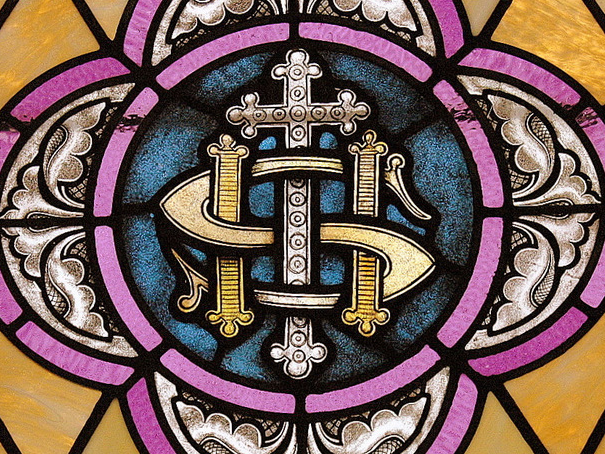
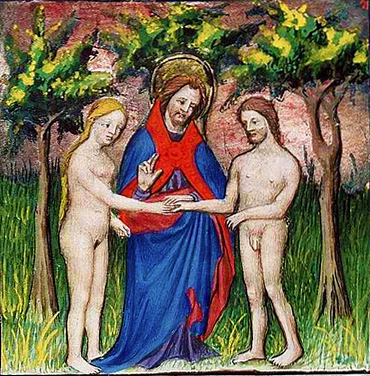
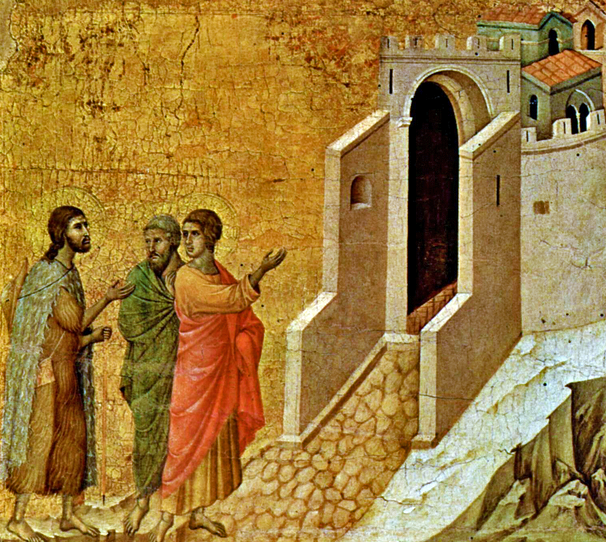

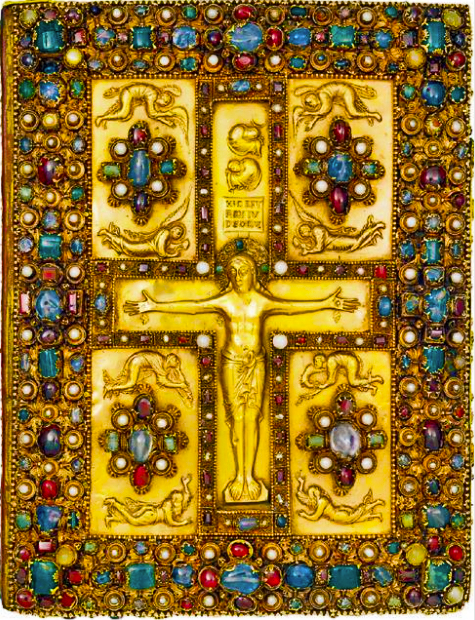



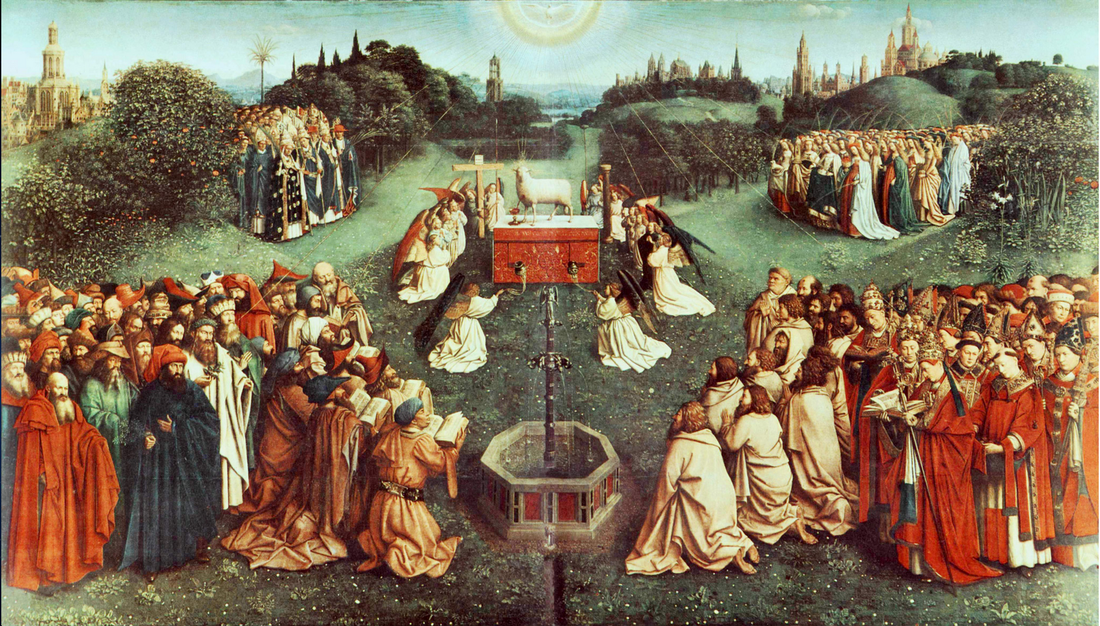
 RSS Feed
RSS Feed